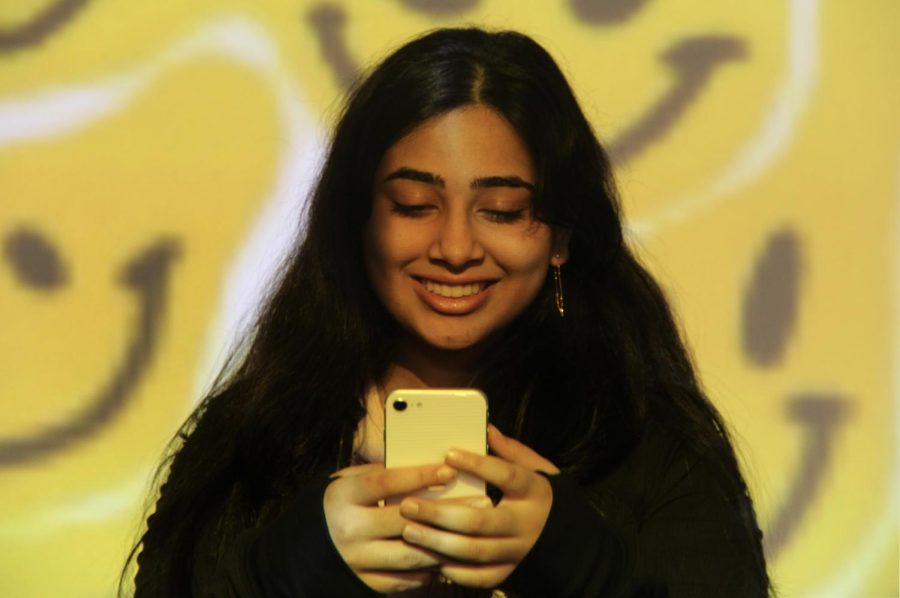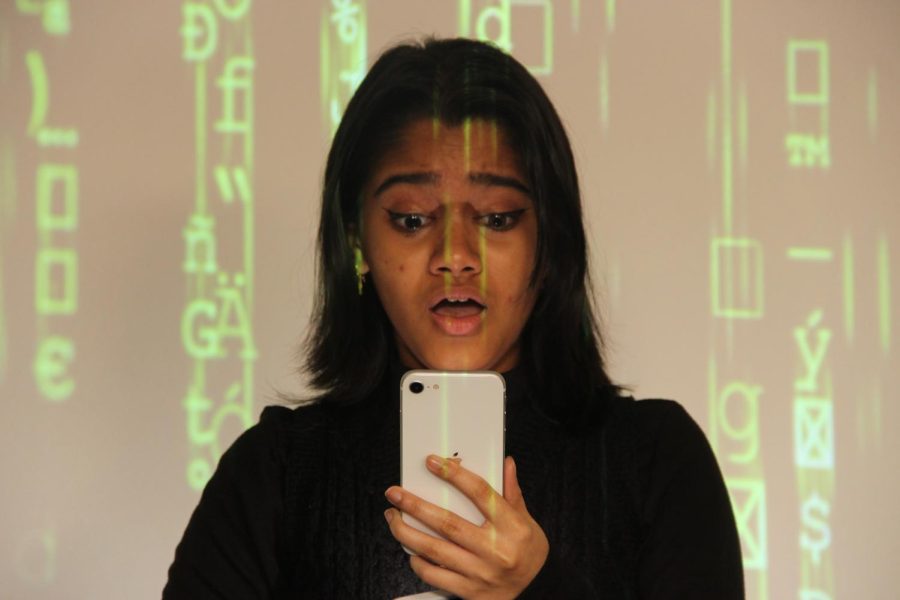Pro/Con: Do social media platforms reduce harm or is it the root behind it?
December 12, 2022
Social media can be a helpful place to spread information. The Sidekick staff writer Aliza Abidi thinks social media can be used to our advantage to make a safer environment.
Social media provides safety in millions
“Did you see his story? He’s in the Bahamas right now.”
“No way, I’ll check Snap Map right now.”
Whether a teenager posts about their vacation to the beach or current activities at school, personal information has the possibility of circulating in the hands of millions through social media. The intake and distribution of information has exponentially increased in recent years with social media platforms consuming the lives of adolescents. Advances with new features in social media apps that allow easy access to new information and the commonality of oversharing has furthered the lack of privacy.
The diffusion of widespread information through social media is not always a negative. Though many may not consider it, this platform informs a wider audience, develops methods to assure the safety of close friends and family and raises knowledge of potential concerns.
For example, with features such as Snapchat’s location feature, one can inform their whereabouts to people they feel comfortable with and can feel safer on a day-to-day basis. Of course, displaying one’s personal information to a large audience is a security risk, but the use of social media to display location to a group of friends is not necessarily a cause of concern. Using social media to share with a wider audience, through multiple media platforms can find help and safety faster if one finds themself in a dangerous situation.
Knowing where a friend is can help indicate danger or harm and help insure safety, especially among teenagers, as a source of tracking and identification. Personally, knowing that there are ways for multiple people to locate me when faced with harm can be a reassuring factor when being out alone. Yes, I would not like people checking my location without a reason but the ability to choose my audience and display certain information about me to a large audience is not always a negative factor.
When I need help, I can post a message on social media. Not only will the use of multiple different perspectives aid me, but the ability of widespread awareness can help the majority share or aid a problem or potential danger.
For instance, the use of TikTok and its wide range of viewers are now used for spreading awareness of global problems. Stories of human trafficking, abuse and inequality have reached new horizons as the problems of a minority became a concern of the majority. As many cases of missing people are solved with the help of the vast reach of social media and people reposting information, the online connection reaches thousands of hands willing to help, bringing safety to those who need it.
For example, this is seen in the case of a 3-year- old toddler who was found with the help of Las Vegas Raiders quarterback Derek Carr retweeting the information to his 270,000 followers.
In Dallas, I have seen many stories of robbery in grocery stores, especially among young women. I am now more aware of my surroundings with the help of the advice of people who were brave enough to display their private experiences with a public audience.
With the use of social media being seen as a source of news and bringing global problems to the forefront of people’s attention through the access of personal information/experiences, security and mindfulness of potential harm has increased. People are less likely to be in a situation of danger that they have already seen or heard about through these media platforms.
Not only do vast platforms help raise awareness of possible dangers, but they also create opportunities for individuals to reach out. Without the fear of being doubted or judged in front of strangers, individuals often request psychological, physical or emotional help online, in front of millions. This helps them find the support they need as shared experiences, foster empathy and with help from a few, lies the support of the many.
Through this support people can find a source of comfort in people they have never met, often resulting in healthier mental well being as the concept of online friends through social media platforms reduces the sense of isolation or loneliness for many, helping find mental encouragement. In many scenarios, most often in TikTok, users send out help requests for funding, safety and emotional support. These are met with people all over the world aiding and giving support to those in need of security.
Keeping security a priority, but not undermining the value of a large audience is a perspective I have adopted. I am mindful of what I post and make accessible on social media platforms, but I know to consider that having broad access to information may not be a direct cause of danger. Help can be provided through the support of the majority and loneliness reduced by the diversity of perspectives.
Safety should come from mindfulness of what information is let out to the public and where it is accessible, but not reduced to the thought that the numbers are what create a cause of danger.
Follow Aliza (@aliza_abidi) and @CHSCampusNews on Twitter.
Social media can be a dangerous place to spread information. The Sidekick advertising/circulation manager Anushree De believes that social media can expose private and personal information, creating an unsafe environment.
Don’t scroll past the peeking
The buildings are in gray and white, as if they have been plunged into some Instagram filter. But it’s not just the buildings. Clothes, food, even people have all become a desolate gray.
Everything is a sea of monochrome, except those posters of the man with the enormous eyes – frightening eyes that follow your every step. The caption underneath the posters runs: BIG BROTHER IS WATCHING YOU.
I open my eyes with a satisfying smile. I call myself a self-proclaimed “connoisseur” of literature, but despite the many books I’ve read, George Orwell’s timeless classic 1984 remains a favorite.
I found solitude in knowing that the far-fetched dystopian world that Orwell created would never find a home in my world. It was comforting to think my reality would never become a place where my every move is under the critical eye of some murky figure, right?
Right?
As much as books have always been satisfying, I will forever be an iPad kid. As I’ve grown up, so has the technology around me. The internet is revered as a tool for globalization, communication, information and mindless entertainment. But the culture of the digital age, although an absolute treasure, is a double-edged sword.
Upon every new vast venture to the web or expansive search on the internet, we make a continuous sacrifice: a part of ourselves to access the greater world of technology.
What is the exchange? Privacy. This trade for technology seems fair, reasonable even. We pass off privacy in today’s world, laughing at our lack of through phrases like “my FBI agent is spying on me.”
But I have nothing to hide, you say, so why should I care?
After you read this article, you’re going to go home and lock your door because the thought of having someone enter your home is absolutely appalling to you. If you’re a high school student, you’ll go into your room and close your door because you don’t want your parents to distract you. Maybe you’ll do some homework on your laptop which has a password. If I took your laptop to look at what you were doing you would pull it from my grasp and scoff at me. The truth is we find refuge within our privacy.
Even if people claim they have nothing to hide, their actions imply the very opposite. We as human beings intrinsically understand the importance of privacy. To be human is to have a place to go to be free of the critical eyes of other people. We value privacy in the real world to a significant extent. But why is there a dissonance between our care for privacy in the real world and in the digital one?
Much of it comes from the fact that the real world is exactly that: real. We recognize the very tangible impacts of locking our house, closing a door or having a password. Technology is a different story. Although we use technology on the daily, it is much harder to comprehend to what extent our privacy is violated. The inability to see the peeking eyes of the puppets that we fall prey to makes us believe they don’t exist. Behind the veneer of our technology screens lies an expansive terrain of data reducing our existence to a series of 0s and 1s.
Despite the crucial importance of privacy, especially with technology, that intrinsic right is inhibited. It has become progressively easier to access information about ourselves online. More specifically, there are three actors that impose on this right: corporations, colleagues and the government.
At this point, you’re probably thinking, “technology may invade my privacy, but there is no way I’m giving up this absolute treasure.”
And you’re absolutely correct. We can’t just abandon technology, especially when so much of what we do relies on it. So, what can we do about the lack of privacy in the digital age?
First, we must become aware that technology does offer an outlet to access our personal lives. Monitoring our online digital presence and the implications they have for us is a key step to change.
But secondly, we can take control of our internet presence to a certain extent. A simple Google search shows what personal information is publicly accessible. Going through the extra step of only allowing the cookies you want enables you to reclaim some digital privacy.
Every cookie leaves crumbs, and if we don’t sweep them every once in a while, we leave those crumbs for someone else to eat.
Follow Anu (@anushree_night) and @CHSCampusNews on Twitter.

